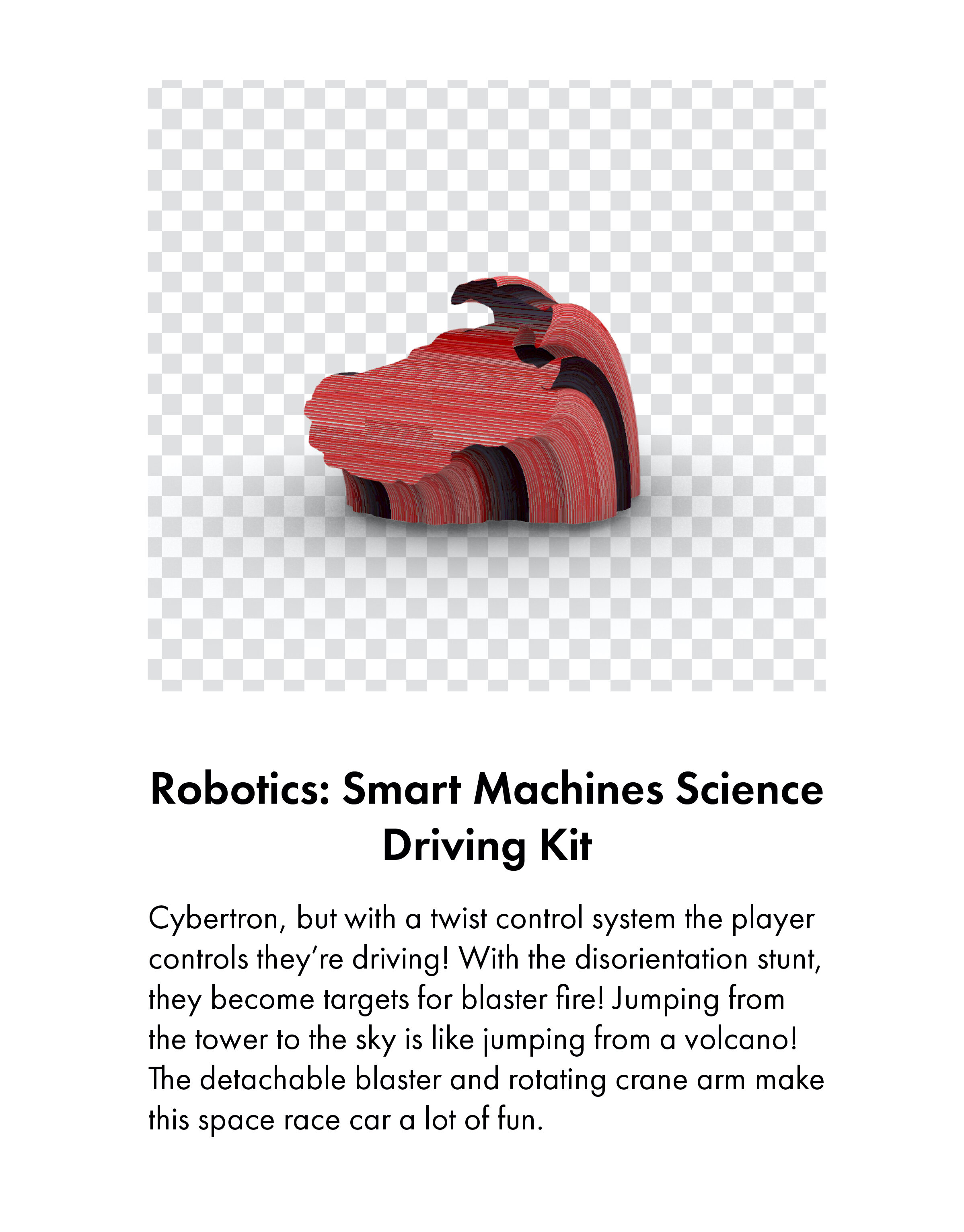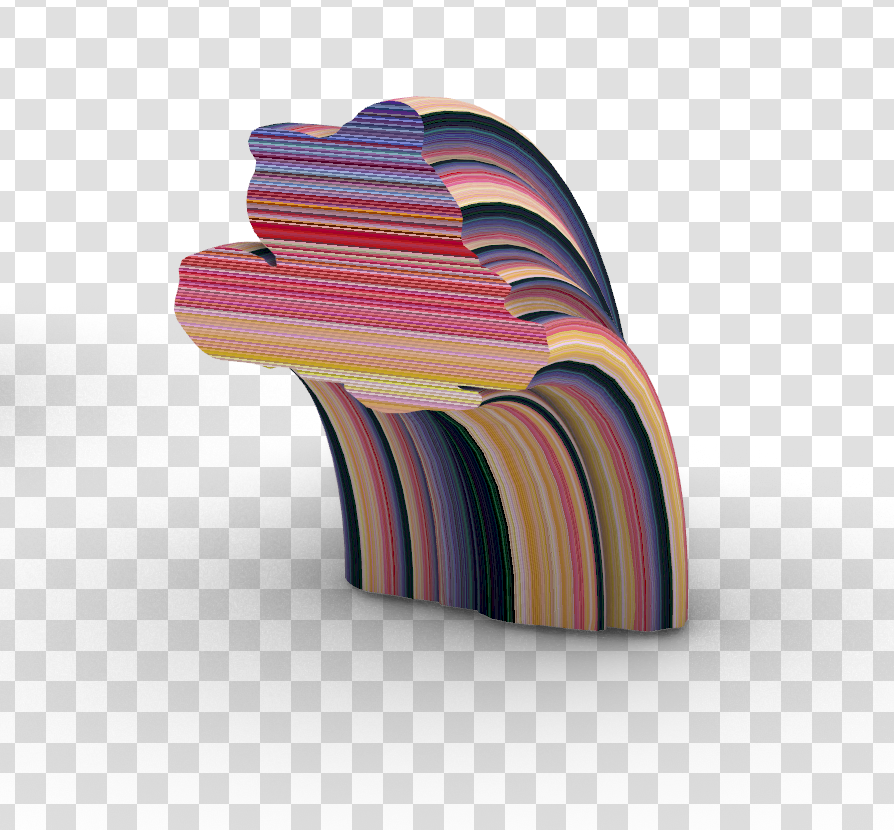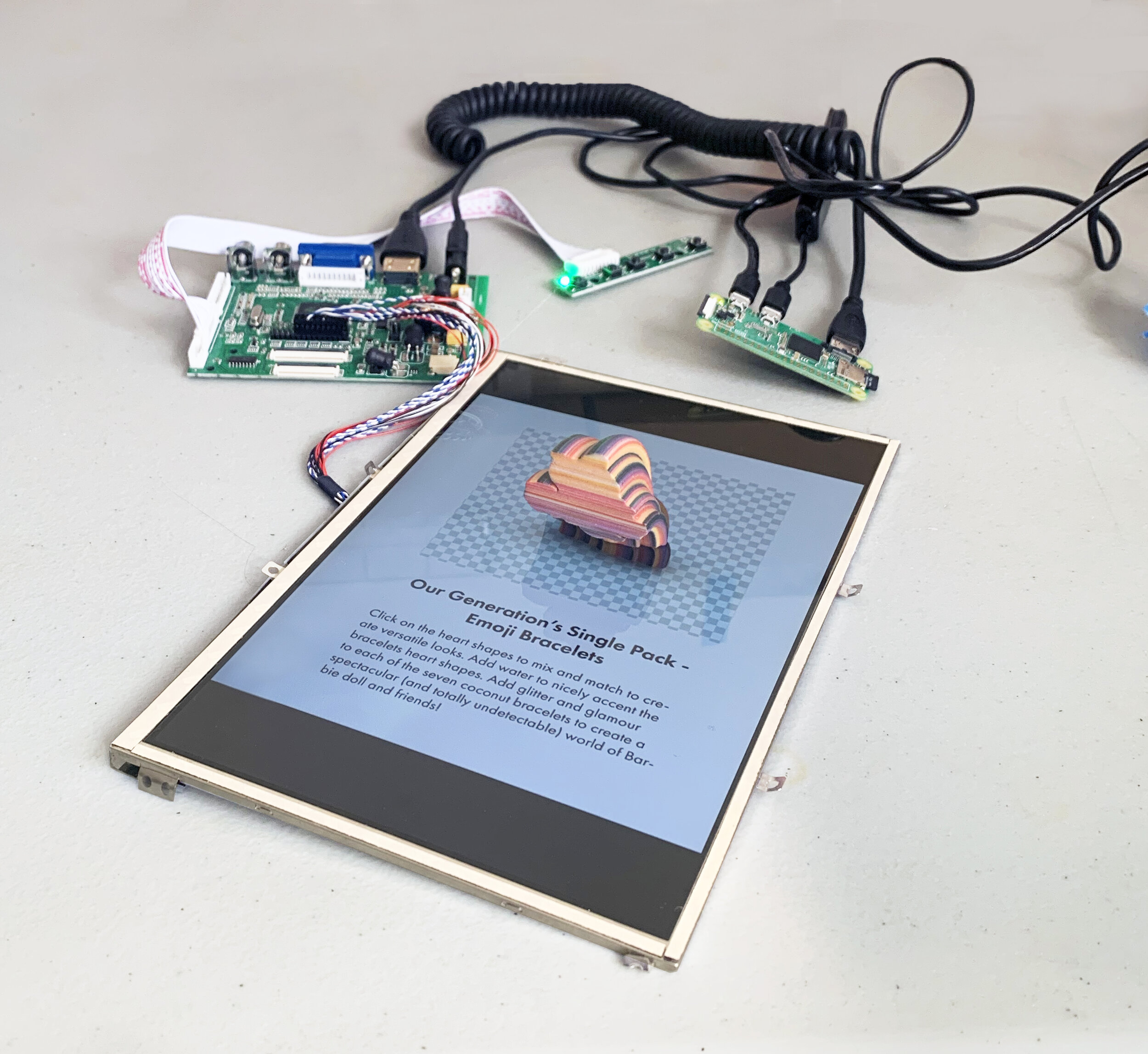A.I. Toys
How does society construct gender through toys? The toys described on these screens were created by a machine learning algorithm trained on real consumer products sold online that have been labeled as “girls” and “boys” toys. After learning from the existing dataset of toys, the A.I. algorithm was asked to invent new toys based on what it learned. The resulting toys have striking differences; girls toys are largely centered on jewelry, domestic chores, dolls and animals, while boys toys are largely centered on weaponry, electronics, cars, and construction. In collaborating with the machine learning model, the resulting toys— derived directly from the toys we produce for children in real life—serve as a reflection of the gendered societal values we place on children through objects of play.
These toy titles and descriptions are generated by a machine learning model trained on real toys currently for sale on Amazon and Target. The top row consists of toys generated from toys labeled “girls”, and the second row are toys generated from toys labeled “boys”. The contrast in content, use of adjectives, and color scheme reflects the way we indoctrinate gender norms through design objects such as toys.
Image credit: Brad Farwell
Prototype of the algorithmically generated toys as a 3d print.
A website with some of the toys generated by the machine learning model: http://ai-toys.net/
Photo credit: Brad Farwell and Ani Liu.
Video by Brad Farwell. As shown at Cuchifritos Gallery + Project Space
Medium:
Machine learning algorithm, screens, electronics, 3d printed toys
Research team:
Ryan Thorpe, Andrea Li, Michelle Lim, Jenny Zhang
Exhibitions:
Cuchifritos Gallery + Project Space
Year:
2022
Related press:
NYTimes: What to See in N.Y.C. Galleries Right Now
Art in America: Ani Liu at Cuchifritos Gallery + Project Space
Artnet News: Artist Ani Liu Has Some Radical Suggestions for What Pregnancy Could Look Like. It Begins With Artificial Wombs
The Brooklyn Rail: Art Seen, Ani Liu: Ecologies of Care
Science Friday: Processing Postpartum With AI And Synthetic Breast Milk Art
BOMB Magazine: Embodied Knowledge: Ani Liu Interviewed by Hallie McNeill
Hyperallergic: Your Concise New York Art Guide for June 2022
Relevant Articles:Preschoolers’ perceptions of gendered toy commercials in the US (Journal of Children and Media)
Breaking Gender Stereotypes in the Toy Box (NY Times)
Boys and Girls, Constrained by Toys and Costumes (NY Times)
Children's Responses to Gender-Role Stereotyped Advertisements (The Journal of Advertising Research)
The Gender Marketing of Toys: An Analysis of Color and Type of Toy on the Disney Store Website
Lego pledges to make toys more gender-neutral and eliminate stereotypes after global survey (Washington Post)
The Real Toy Story: Inside the Ruthless Battle for America's Youngest Consumers by Eric Clark









